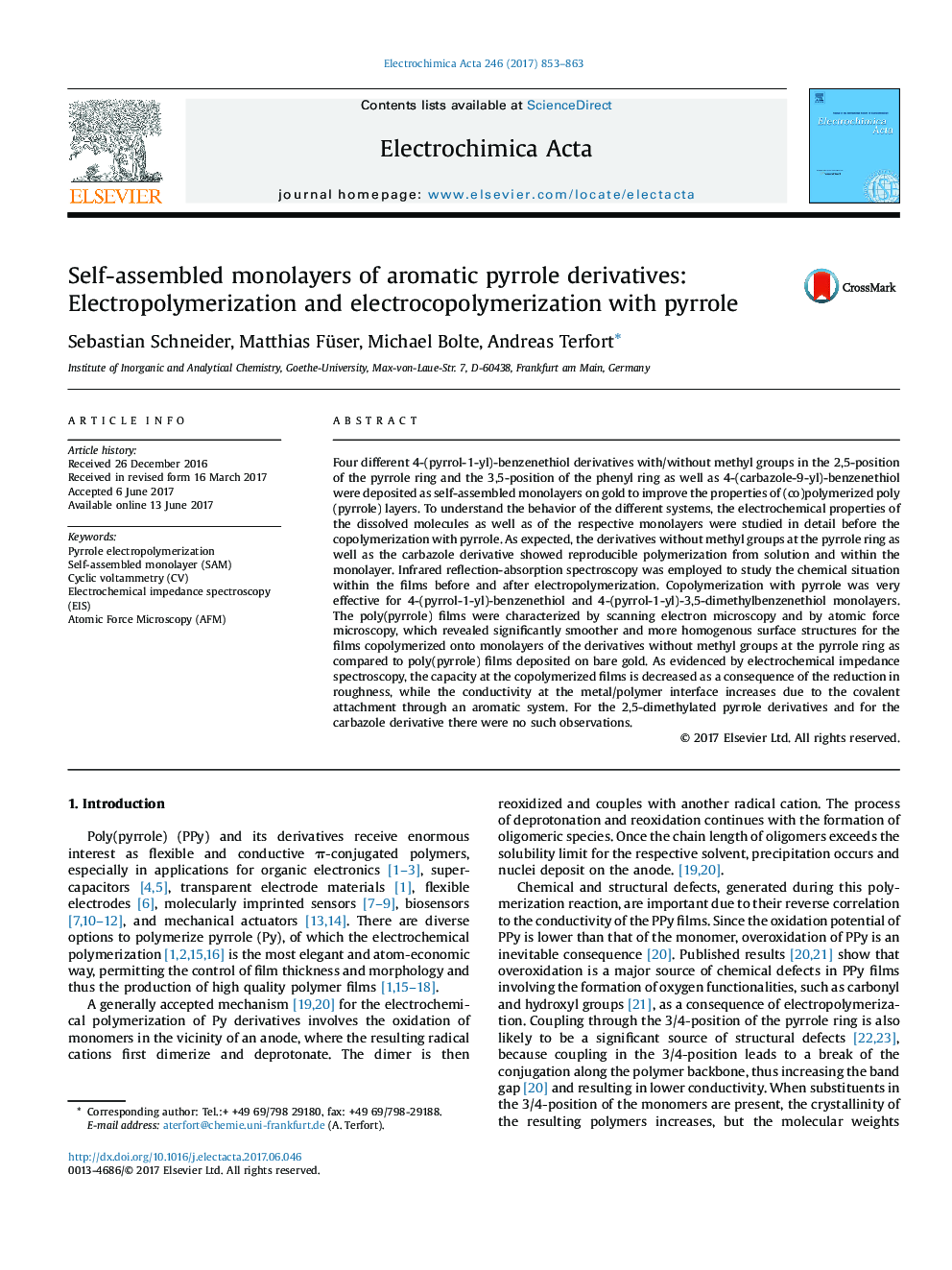| Article ID | Journal | Published Year | Pages | File Type |
|---|---|---|---|---|
| 6470630 | Electrochimica Acta | 2017 | 11 Pages |
Four different 4-(pyrrol-1-yl)-benzenethiol derivatives with/without methyl groups in the 2,5-position of the pyrrole ring and the 3,5-position of the phenyl ring as well as 4-(carbazole-9-yl)-benzenethiol were deposited as self-assembled monolayers on gold to improve the properties of (co)polymerized poly(pyrrole) layers. To understand the behavior of the different systems, the electrochemical properties of the dissolved molecules as well as of the respective monolayers were studied in detail before the copolymerization with pyrrole. As expected, the derivatives without methyl groups at the pyrrole ring as well as the carbazole derivative showed reproducible polymerization from solution and within the monolayer. Infrared reflection-absorption spectroscopy was employed to study the chemical situation within the films before and after electropolymerization. Copolymerization with pyrrole was very effective for 4-(pyrrol-1-yl)-benzenethiol and 4-(pyrrol-1-yl)-3,5-dimethylbenzenethiol monolayers. The poly(pyrrole) films were characterized by scanning electron microscopy and by atomic force microscopy, which revealed significantly smoother and more homogenous surface structures for the films copolymerized onto monolayers of the derivatives without methyl groups at the pyrrole ring as compared to poly(pyrrole) films deposited on bare gold. As evidenced by electrochemical impedance spectroscopy, the capacity at the copolymerized films is decreased as a consequence of the reduction in roughness, while the conductivity at the metal/polymer interface increases due to the covalent attachment through an aromatic system. For the 2,5-dimethylated pyrrole derivatives and for the carbazole derivative there were no such observations.
Graphical abstractDownload high-res image (92KB)Download full-size image
